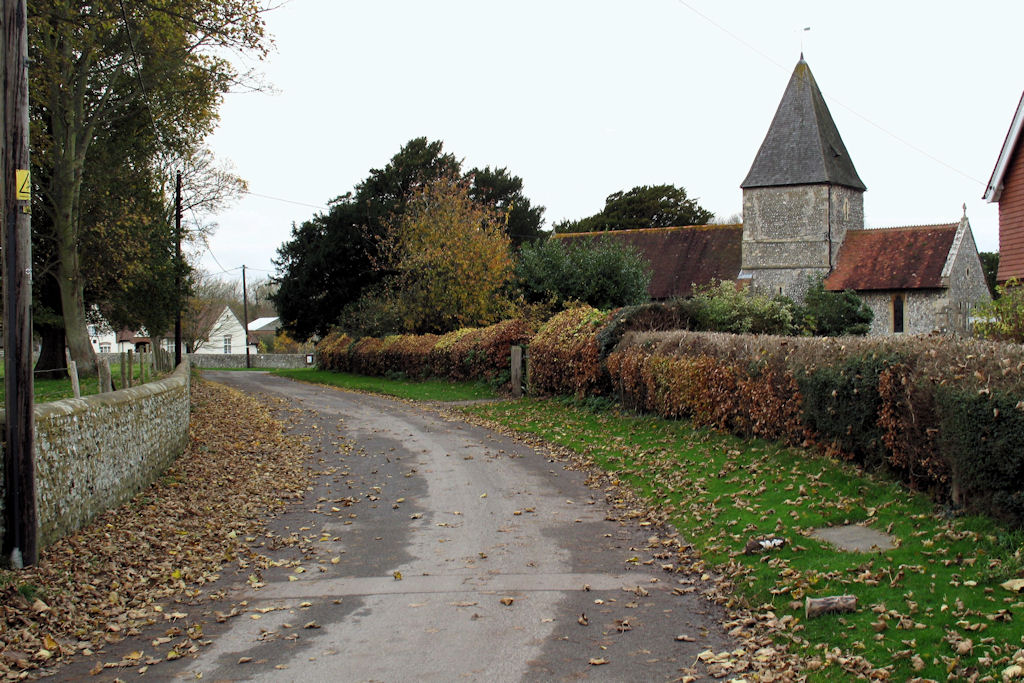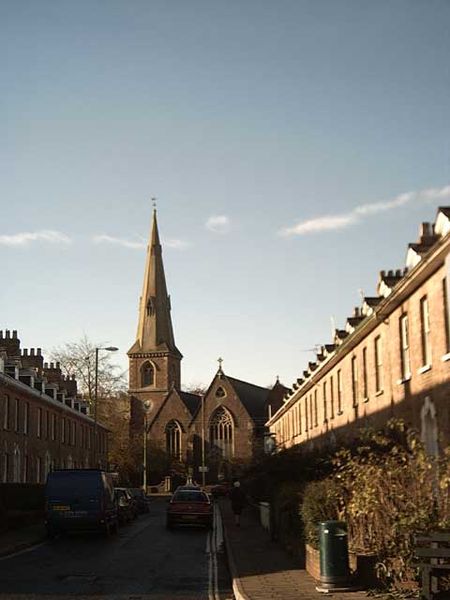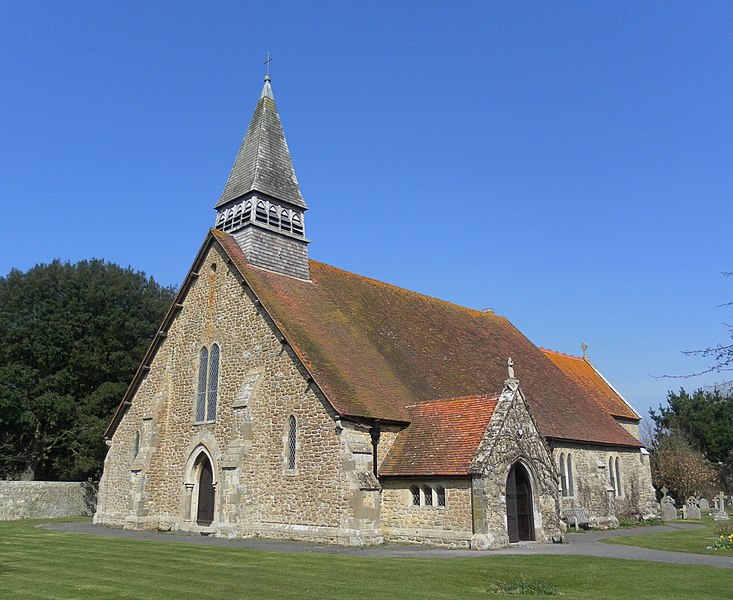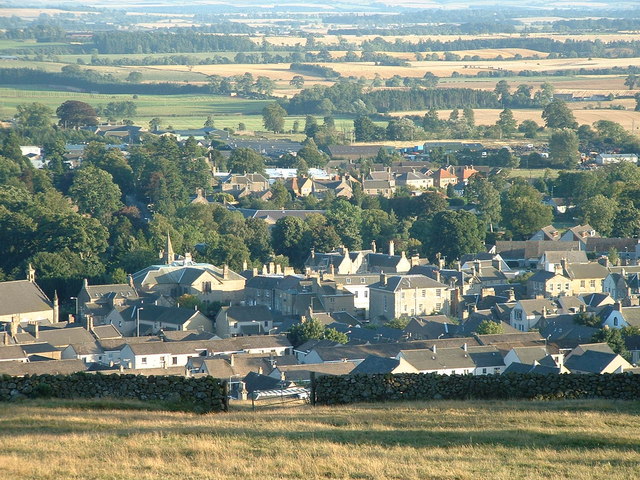This is the main wedding photograph:
These are the people you can see:
Back row
Edward John Shoesmith, Emily Stephenson, William Stephenson
Front row
Katie Mary Edgar, Bessie Stephenson, Herbert, Alice, Blanche Stephenson, Eliza Stephenson
Blanche and Bessie Stephenson are Alice 's
sisters, William's her brother, Emily's William's wife. Eliza (neé Hobden) is Alice 's mother.
Katie Mary is Herbert's sister. She and Sergeant Shoesmith were
the witnesses, and I presume the latter was the best man.
But probably the most important thing about the photo is who
isn't in it! Herbert had two parents, both alive, and eight siblings. His
sister Alice was in India
and his brother Frederick was somewhere between California and Australia , but the others were all
alive and within striking distance of Knightsbridge. His parents Thomas and Harriet were either in Theydon Garnon or Stanford Rivers
But only his sister Katy Marie is present. Where were
all the others? They were obviously boycotting a ceremony they considered less
than joyful. It's possible that they disapproved of Alice because she had a child from a previous
relationship and was about five months pregnant with her first child with Herbert (my father Thomas).
However, that's speculation.
Family tradition suggests a different reason for the absence of the Edgars:
they thought Alice
wasn't good enough for their Herbert! The English class system is a funny thing,
or at least it was in 1911 and remained so in the 1950s when I was growing up.
Because actually Herbert and Alice were well matched
socially.
She was a domestic servant like her mother and many other
members of her family, which was the fate of huge numbers of working class
women in the nineteenth and early twentieth centuries (after WW1 the wages that
servants could command led to their disappearance from the homes of everyone
but the truly wealthy, a source of many middle class complaints). For those
lucky enough to keep out of the dreaded workhouses, domestic service was quite
close to the bottom of the hierarchy.
What about Herbert?
He'd been a labourer (almost certainly on a farm), a
policeman, and a private in the army. In other words, he'd been bouncing around
just above the bottom of the class structure himself. Not a servant though?
That's true, but his parents were. In the 1911 Census they're both recorded as
domestic servants on a farm at Stanford Rivers close to Ongar in Essex .
So why did they think Alice
wasn't good enough? It cannot have been because of her personal qualities: she
was to go on to become a highly respected citizen of Windsor, a magistrate,
who, I was once informed by one of her colleagues, usually managed to convince
the Bench of the correctness of her view of the case in front of them! She left
school at 13 but one of her daughters told me people often thought she was
well-educated. She was, but not at school: when I was young I used to enjoy
browsing her books in the huge Victorian semi in Vansittart Road; they included
a Harmondsworth Self-Educator - 'a
golden key to success in life' - and a good collection of 1930s titles from the
New Left Book Club, which published on contemporary issues like communism,
fascism, the Great Depression and so on. Alice
built on what she'd learnt at school to give herself the kind of education that many people who started life with much greater
opportunities would have envied.
I believe that the Edgars stayed away from the wedding and generally
disapproved of Alice
for a different reason: whatever they were in December 1911, they'd once been
very different. At the height of their wealth - in the middle decades of the nineteenth century - the family had owned a windmill and held the tenancy of a reasonably-sized
Suffolk farm.
Herbert spent the first five or so years of his life in comfort and with the expectation
of a reasonably privileged life ahead of him, but about 1882 something
happened: one of Herbert's sons described it as being 'sold down the river by
Lloyds bank'. The family's position was ruined and Herbert's father, Thomas,
and his wife Harriet began their long social descent - from farmer, to farm
manager, to labourer to servant. In 1911, almost seventy years of age, Thomas
must have been wondering if he and Harriet would end their days in the dreaded
workhouse. Happily something - I don't yet know what - intervened, and the
couple spent their final years in a cottage in Theydon Garnon. The first
document linking them with that village comes on September 1, 1913 when Thomas
signed the register in the local church when Katie Mary had her own wedding to
Joseph Love.
So I think that the groom's family looked down on the bride from the great height occupied by Herbert's great-grandfather Johnson Edgar (died 1872)!
I've written about all the family members mentioned already
(click on their names for the posts). But there's one other person present,
and rather a mysterious one.
At first I thought I had found the answer to the
often-asked question 'How did Alice
and Herbert meet'. One of Alice 's
fellow maids at Mrs. Osborne's establishment at 33, Wilton Place was the 19 year old Edith
Annie Shoesmith. So I assumed that Sergeant Edward John Shoesmith was an army
friend of Herbert's - if he wasn't the best man, I don't know who was - and
that his young sister Annie had taken Alice
to meet her brother and she'd fallen for his friend instead. Reasonable enough, and it might even be true she introduced the bride and groom, but not in the way I first thought.
Sgt. Shoesmith was over 20 years older than Herbert, had retired from the army before the wedding and Alice's co-worker was his daughter not his brother.
Sgt. Shoesmith was over 20 years older than Herbert, had retired from the army before the wedding and Alice's co-worker was his daughter not his brother.
Edward John Shoesmith was born in 1864 and joined the army
in 1882. He seems to have had a satisfactory career, being described as of
'exemplary' character, seeing service in the Boer War (1899-1902) and rising from
the ranks through corporal to sergeant. He served almost 25 years before being discharged in December 1906. In 1901 he was living with his family in London and Edoth Annie is listed as his 9 year old daughter. In the 1911
Census he's described as 'Army Pensioner Quartermaster Sergeant Royal Hospital Chelsea'.
His wife and four of his children are living with him (Edith was of course at 33, Wilton Place) so this must be a residence not
just a hospitalisation. The last record I have of him shows that in 1939 he was
retired and living with his wife in Ealing.
In other words, although he might of course have been a friend
of Herbert's the only provable link at the moment is between him and Alice (through
his daughter)! So it's possible that, apart from Katie Mary, everybody in the
picture is from Alice 's
'side'. I doubt that is the case: Herbert most probably knew him from the army in
some way that isn't as straightforward as I first thought.And I think Herbert must have asked Sgt. Shoesmith to be best man - if Alice had to provide that functionary he was being boycotted not just by his bride's family but by all his fellow soldiers as well! There is nothing in his military records to suggest he had any particular character flaws or problems.
Perhaps the truth about Edward John Shoesmith will emerge in the future.
Perhaps the truth about Edward John Shoesmith will emerge in the future.











